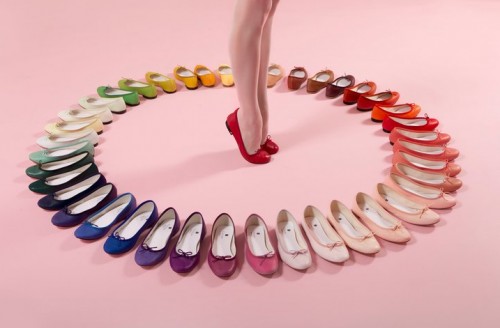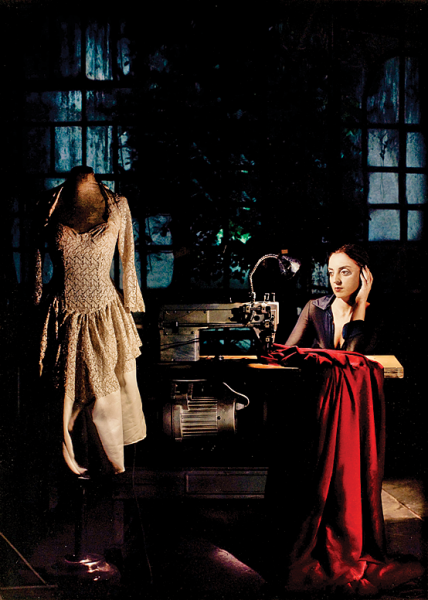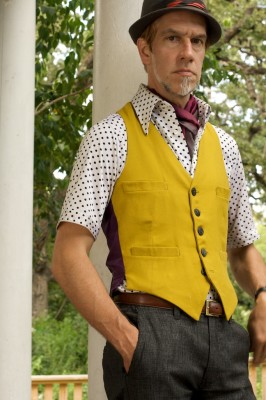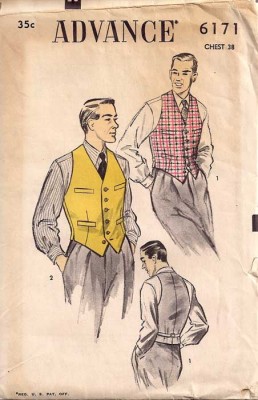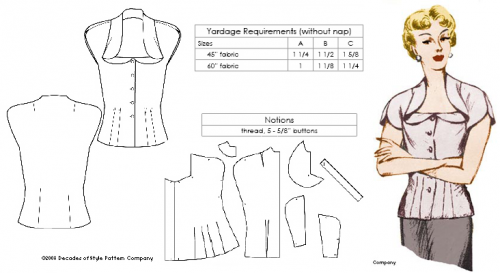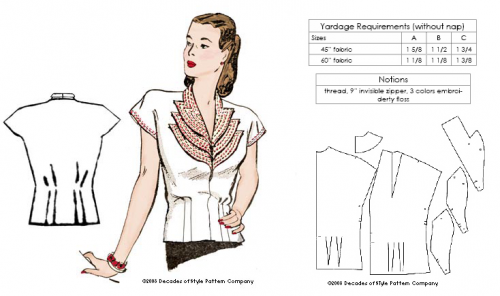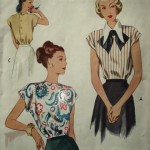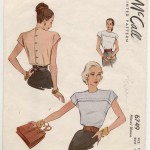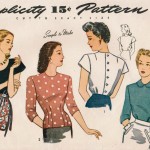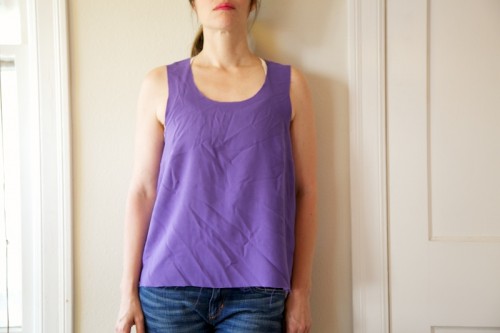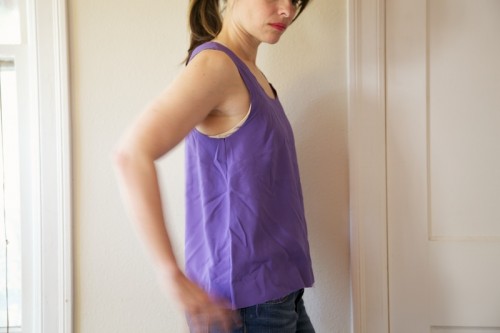Since there is a dearth of fabric stores in Austin, I buy most of my sewing stuff and especially fabrics online. Which, yeah, is always a gamble especially in terms of color. I am so picky when it comes to color. I bought 5 rose bushes before I found the perfect shade of coral-y shell pink flower I was looking for. Coral is not coral is not coral.
And color always shifts in relation to its surrounding colors.
{Credit}
Not to mention some fabric stores take pictures under flourescents and using flash, making things much warmer than I know they really are.
I get certain color combinations in my head specifically with fabric. For the longest time it was orangey coral with a bright cobalt blue. Last winter I wanted a red wool crepe dress to wear with red tights and black boots. Have you ever tried to shop red fabrics? I wanted bright, clear red. Not an orange red, not a blue red, not a dark red. I wanted the kind of primary red that looks straight out of a cadmium red paint tube.
It was impossible to find. Lots of fabrics were/are described as “lipstick red” and anyone into red lipstick knows “true red” is in the eye of the beholder and the skin tone of the wearer. MAC has at least five good but wildly different reds. I took a risk on a doubleknit described online as “true red” but ended up with a very brick red.
Right now I have a fascination with tomato red, a risky color on me because I tend to look pallid in very warm orangey colors. And uh, what exactly is tomato red? I mean, some interpretations of “tomato” are almost purpley red, as tomatoes can be. But I’m thinking more like a flame red pigment. Argh, I blame this all on that four-month color theory class.

Speaking of fabric stores, one of my favorite textile shops of all, Britex in San Francisco, has just recently opened an online shop to include an edited selection of fabric. Britex in person is a bit of an experience. Be prepared to have opining salespeople bringing you fabrics left and right–it’s not a place to sneak–but I like talking fabrics with them. Be also prepared to drop your jaw and see prices up to $100 a yard both online and in person. They have Valentino silks and Dior leathers, after all–but once in awhile it’s fun to just see such gorgeousity!

